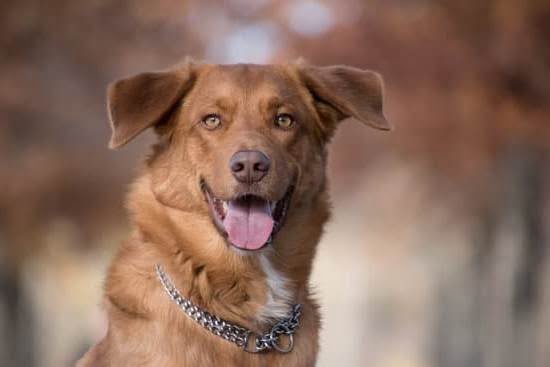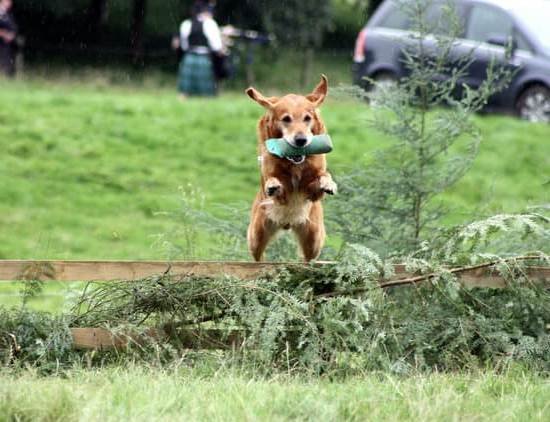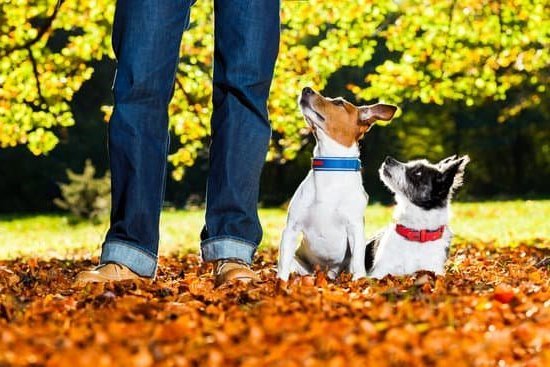House training is a crucial skill that every dog owner needs to master, and this is especially true for owners of little dogs. In this article, we will explore the importance of house training for small breeds and provide valuable insights on how to successfully house train your furry friend.
Many people underestimate the benefits of house training their little dogs, but it goes far beyond just preventing accidents in the house. A well-trained dog not only creates a harmonious living environment but also strengthens the bond between you and your pet. Additionally, a properly trained dog is more welcome in social situations, allowing you to take them along with confidence.
However, there are common misconceptions surrounding the house training of little dogs. Some believe that smaller breeds are more difficult to train or have uncontrollable bathroom habits due to their size. With patience and consistency, these misconceptions can be put to rest. It is important to approach house training with an open mind and adjust your techniques accordingly to suit the needs of smaller breeds.
Understanding the Unique Challenges of House Training Little Dogs
House training little dogs presents its own set of unique challenges due to their size and physical limitations. It is important for dog owners to be aware of these challenges in order to effectively and successfully house train their small furry companions.
Firstly, small dog breeds have smaller bladders compared to larger breeds. This means that they will need to urinate more frequently and require more potty breaks throughout the day. As a result, it is crucial for dog owners to provide their little dogs with ample opportunities to relieve themselves outside or in a designated potty area indoors.
Another challenge faced when house training little dogs is their vulnerability to colder temperatures. Due to their smaller body size, they are more susceptible to cold weather and may struggle with being taken outside during winter months. In such situations, providing alternative indoor options like pee pads or an indoor potty area can be beneficial.
To address these challenges, dog owners should establish a consistent routine for house training their little dogs. This involves creating a regular feeding schedule, designating specific times for outdoor potty breaks and reinforcement training, as well as implementing a predictable sleep and play routine. By doing so, small dogs will become accustomed to the daily routine and learn when to expect bathroom breaks.
In summary, understanding the unique challenges of house training little dogs is crucial for effective training outcomes. Recognizing the smaller bladders and vulnerability to colder temperatures helps dog owners adapt their approach accordingly. By establishing a consistent routine and providing appropriate alternatives when needed, successful house training can be achieved for small furry companions.
| Challenges | Solutions |
|---|---|
| Smaller bladders require frequent potty breaks | Provide ample opportunities for outdoor or indoor relief |
| Vulnerability to colder temperatures | Offer alternative indoor potty options during winter months |
Preparing Your Home for Successful House Training
When it comes to house training little dogs, preparing your home adequately is essential for success. Creating a conducive environment that supports their training efforts can make the process smoother and more effective. In this section, we will discuss some key steps to take in order to prepare your home for successful house training.
Setting up a designated potty area indoors and outdoors
One of the first things you should do is establish a designated potty area for your little dog both indoors and outdoors. This helps them understand where they should relieve themselves and reinforces consistency in their training. Indoors, you can use doggy pads or artificial turf specifically designed for this purpose.
Place these in an easily accessible location that is away from their eating and sleeping areas. Outdoors, choose a spot in your yard that is easily accessible and consistently bring them there every time they need to go.
The significance of using proper dog training tools and supplies
Having the right tools and supplies on hand is crucial for successful house training of little dogs. Doggy pads or artificial turf mats are invaluable when it comes to indoor potty training. These provide an appropriate place for them to relieve themselves while protecting your floors. Additionally, crates or playpens can be useful tools in controlling their movement indoors when unsupervised, reducing the chances of accidents occurring.
Identifying potential household hazards
Before starting house training, it’s important to identify any potential hazards within your home that may impede your little dog’s progress. Keep an eye out for small objects or items that could be considered chew toys by your curious pup.
Ensure toxic substances are safely stored out of reach, as accidents involving ingestion could lead to illness or injury. By addressing these potential hazards beforehand, you will create a safer environment that allows your small breed dog to focus on learning good bathroom habits.
By following these steps and adequately preparing your home before starting the house training process, you will create an environment that supports and reinforces your little dog’s learning. A properly set-up potty area, the use of necessary training tools, and the identification of any potential hazards will set both you and your little dog up for success in their house training journey.
Establishing a Consistent Routine for House Training
When it comes to house training little dogs, one of the key factors for success is establishing a consistent routine. Dogs, especially small breeds, thrive on predictability and structure, making it essential to create a schedule that revolves around their bathroom needs and training reinforcement. By implementing a consistent routine, you can help your little dog develop good habits and minimize accidents in the house.
Creating a Regular Feeding Schedule
One of the first steps in establishing a consistent routine for house training is creating a regular feeding schedule for your little dog. By feeding your dog at the same times every day, you can regulate their bowel movements and anticipate when they may need to go outside. Be sure to choose high-quality food that is appropriate for your dog’s breed and age as this can also impact their bathroom habits.
Remember to provide fresh water throughout the day but take note of when your little dog drinks, as this may indicate when they will need to relieve themselves. By keeping track of their eating and drinking patterns, you can better plan their potty breaks and avoid accidents indoors.
Designating Specific Times for Outdoor Potty Breaks
In addition to creating a regular feeding schedule, it is crucial to designate specific times for outdoor potty breaks. Little dogs have smaller bladders and shorter hold times compared to larger breeds, which means they may need more frequent bathroom breaks throughout the day. Aim for taking them out at least every 2-3 hours or immediately after meals or naps.
Consistency is key during these potty breaks. Take your little dog to the same spot outdoors each time so they can associate that area with relieving themselves. Use verbal commands such as “go potty” or “do your business” to help reinforce the behavior you want from them. When they successfully go outside, provide lots of praise and rewards to encourage them to continue doing so.
Implementing a Predictable Sleep and Play Routine
In addition to regular feeding and potty breaks, implementing a predictable sleep and play routine can also help in house training little dogs. Dogs thrive on consistency, so establishing set times for play and rest can assist in minimizing accidents.
Plan playtime after your little dog’s scheduled potty break outdoors, as physical activity often stimulates their need to go. Ideally, they should have at least 30 minutes of exercise before settling down for a nap or bedtime.
Make sure your dog has a designated cozy spot for sleep that is separate from their potty area. Crate training can be very helpful with this as it provides them with a safe space that mimics the den-like environment dogs naturally seek out.
By implementing a consistent schedule that includes regular feeding times, designated potty breaks, and predictable sleep and play routines, you can set your little dog up for success in their house training journey. Remember to be patient and consistent throughout the process as it may take time for your furry friend to develop good habits. With dedication and positive reinforcement, you will soon have a well-trained little dog who understands where they should go to relieve themselves.
Positive Reinforcement Techniques for Effective House Training
When it comes to house training little dogs, positive reinforcement techniques can be highly effective in teaching them desired behaviors and habits. Positive reinforcement involves rewarding good behavior with treats, praise, and affection, which motivates the dog to repeat those behaviors in the future. This section will explore the importance of positive reinforcement techniques in house training small dogs and provide some practical tips for implementation.
One key aspect of positive reinforcement is using treats as rewards during the house training process. Small, bite-sized treats that are high in value to the dog can be used to reinforce desired behaviors such as going to the designated potty area or alerting their owner when they need to go outside. By associating these actions with a tasty treat, the dog will be more motivated to repeat them.
In addition to treats, clicker training can also be a valuable tool in house training little dogs. A clicker is a handheld device that makes a distinct clicking sound when pressed.
This sound serves as a marker for when the dog has performed the desired behavior correctly. By pairing this click with a reward such as a treat or praise, the dog learns to associate the click with positive outcomes and will strive to hear it again by repeating the desired behavior.
Another important element of positive reinforcement is verbal commands and praise. When teaching your little dog where they should eliminate or what they should do when they need to go outside, use simple and consistent verbal commands such as “go potty” or “outside.” By using these commands consistently and praising them when they follow through, you are reinforcing their understanding of what is expected of them.
| Tips |
|---|
| Use small treats as rewards for desired behaviors |
| Utilize a clicker to mark correct behaviors |
| Give consistent verbal commands and praise |
By incorporating positive reinforcement techniques into your house training routine, you can create a positive and rewarding learning experience for your little dog. Remember to be patient and consistent with your training methods, as it may take some time for them to fully grasp and adopt the desired habits. With dedication and positive reinforcement, you can set your small dog up for success in their house training journey.
Addressing Accidents with Little Dogs
Accidents are a common occurrence during the house training process, especially when it comes to little dogs. However, it is important for dog owners to address accidents in a calm and positive manner in order to encourage learning and prevent future mishaps. In this section, we will discuss recommended cleaning products for accidents and offer tips on how to handle accidents without punishing the dog.
Recommended cleaning products for accidents
When accidents happen, it is essential to clean up the mess promptly and thoroughly in order to eliminate any lingering odors that might attract your little dog back to the same spot. Here are some recommended cleaning products that can effectively remove stains and odors caused by accidents:
- Enzymatic cleaners: These cleaners contain enzymes that break down the proteins in urine or feces, effectively removing both the stain and odor. Be sure to follow the instructions on the product for best results.
- Baking soda and vinegar: Mixing baking soda with vinegar can create a powerful homemade cleaner that neutralizes odors. Apply the mixture to the affected area and let it sit before blotting it dry.
- Pet stain and odor removers: There are many commercial pet stain and odor removers available that are specifically formulated to eliminate smells caused by pet accidents.
Tips on how to remain calm and not punish the dog during accidents
It is crucial to remember that accidents are part of the learning process for little dogs, and punishment will only hinder their progress. Instead of scolding or punishing your dog, follow these tips on how to handle accidents calmly:
- Stay calm: Reacting angrily or shouting at your dog may cause them to become fearful or anxious, making it harder for them to understand what they did wrong.
- Interrupt mid-accident: If you catch your dog in the act of having an accident indoors, gently interrupt them by clapping your hands or making a noise to get their attention. Then, quickly guide them to the designated potty area.
- Clean up accidents properly: As mentioned earlier, use the recommended cleaning products to thoroughly clean up accidents and eliminate any scent that may attract your dog back to the same spot.
- Positive reinforcement: Instead of punishing your dog for accidents, focus on rewarding and praising them when they eliminate in the appropriate area. This will reinforce their understanding of where they should go.
By remaining calm, using proper cleaning products, and focusing on positive reinforcement, you can effectively address accidents with little dogs and encourage their learning during the house training process. Remember that patience is key, as it may take time for your dog to develop reliable bathroom habits.
Tackling Challenges and Additional Tips for House Training Little Dogs
Although house training little dogs can be a rewarding and fulfilling process, it does come with its own set of challenges. Understanding these challenges and having strategies to overcome them can greatly contribute to the success of house training. In this section, we will address some common challenges faced when house training small dog breeds and provide additional tips for a smoother training experience.
- Dealing with Separation Anxiety: One challenge that small dog owners may encounter during house training is separation anxiety. This can lead to accidents indoors when the dog becomes anxious or stressed in their owner’s absence. To tackle separation anxiety, it is important to gradually introduce alone time, starting with short durations and gradually increasing the duration over time. Providing interactive toys or puzzles can also help distract the dog and alleviate their anxiety.
- Handling Stubborn or Independent Personalities: Some small dog breeds, like Chihuahuas or Dachshunds, are known for their stubborn or independent nature. This can make house training more challenging as they may be resistant to following commands or routines. To overcome this challenge, consistency and positive reinforcement techniques are key. Breaking down tasks into smaller steps and rewarding even small improvements can help motivate them to follow through with desired behaviors.
- Expert Advice on Managing Specific Challenges: It is helpful to seek out expert advice from trainers experienced in working with small dog breeds when facing specific challenges during house training. They can provide personalized guidance based on the individual needs of your dog breed, such as addressing territorial marking behaviors or excessive barking.
In addition to these challenges, there are a few additional tips that can make the house training process smoother for little dogs:
- Stay consistent with the established routine and be patient throughout the process. Consistency is particularly crucial for small dogs as they rely on predictable schedules.
- Use baby gates or playpens to limit access within the home until your small dog becomes reliably house trained. This helps prevent accidents in areas that are harder to monitor.
- Consider enrolling your little dog in a puppy training class. These classes not only provide valuable training techniques but also offer opportunities for socialization with other dogs, which can aid in their overall behavior and confidence.
By being aware of these challenges and implementing the additional tips provided, you can effectively tackle the obstacles faced during house training small dogs, leading to successful and reliable habits. Remember, every dog is unique, so it’s important to be patient and adapt your approach as needed.
Celebrating Success
Once your little dog has successfully grasped the basics of house training, it is time to celebrate their accomplishments and gradually transition them to reliable habits. This phase is crucial in solidifying their potty training skills and ensuring they consistently follow good bathroom habits. By following a few key steps, you can help your small dog maintain their newfound success while gradually increasing their freedom in the house.
The first step in transitioning from house training to reliable habits is recognizing the signs that your little dog has become fully house trained. These signs include consistently going potty in the designated area, holding their bladder for longer periods without accidents, and showing improved understanding of verbal commands related to bathroom routines. It is important to remember that each dog learns at their own pace, so be patient and allow time for them to fully grasp these skills.
As your small dog demonstrates consistent reliability in house training, you can begin to gradually increase their freedom within the home. Start by expanding their access to one additional room at a time, ensuring that there are no temptations or hazards present during this process. Supervision remains key during this transitional period as accidents may still occur if your little dog is given too much freedom too soon.
To maintain good habits and prevent regression, continue reinforcing positive behaviors through praise, treats, and affection. Consistency and routine are still essential during this transition phase. Some experts recommend establishing a regular schedule for potty breaks even after your small dog has mastered house training. This helps reinforce good habits and prevents them from forgetting or becoming complacent with their bathroom routine.
By slowly granting more independence and reinforcing good behaviors consistently, you can ensure that your little dog maintains reliable bathroom habits over time. It is important to keep in mind that occasional accidents may still happen even after they have graduated from formal house training. Patience and understanding are crucial during these moments, as punishing or scolding your pet can create anxiety and hinder their progress. Instead, address accidents calmly and redirect their behavior towards the designated potty area.
Transitioning from house training to reliable habits is a rewarding milestone for both you and your little dog. With patience, consistency, and positive reinforcement, you can celebrate the success of a well-trained small dog while ensuring they continue to follow good bathroom habits. Remember, if you encounter any difficulties during this process, don’t hesitate to seek professional help from a dog trainer or behavioral expert who specializes in small breeds.
Conclusion
In conclusion, successfully house training little dogs requires consistency, patience, and a positive reinforcement approach. It is important to understand the unique challenges that come with house training smaller breeds, such as their size and physical limitations, frequent potty breaks due to smaller bladders, and vulnerability to colder temperatures. By preparing your home with designated potty areas indoors and outdoors, using proper dog training tools and supplies, and identifying potential hazards, you can set your small dog up for success.
Establishing a consistent routine is key in house training little dogs. This includes creating a regular feeding schedule to regulate bathroom habits, designating specific times for outdoor potty breaks and reinforcement training, and implementing a predictable sleep and play routine. Positive reinforcement techniques should be used throughout the training process, including rewarding good behavior with treats, clicker training, verbal commands, praise, and affection.
It is important to address accidents calmly and not punish the dog. Instead, focus on cleaning accidents properly with recommended products while encouraging learning by redirecting their behavior towards desired areas. Challenges may arise during the house training process, such as separation anxiety or dealing with stubborn or independent personalities in small breeds. If difficulties persist, seeking professional help can provide guidance and support.
Ultimately, successfully house training a little dog brings joy and numerous benefits. With patience and consistency in maintaining good habits over time, small dogs can graduate from confinement to gradually increasing freedom within the house. By reiterating the importance of consistency, patience, positive reinforcement techniques,and reminding readers of the joy of having a well-trained little dog,the journey of house training can become an enjoyable experience for both owner and pet alike.
Frequently Asked Questions
Are small dogs harder to house train?
Small dogs are not necessarily harder to house train than larger dogs. The difficulty of house training a dog does not solely depend on its size, but rather on various factors such as the breed’s temperament, the consistency of the training methods used, and the dog’s individual personality.
While it is true that small breeds may have smaller bladders and higher metabolisms compared to larger breeds, making them prone to more frequent potty breaks, with proper training techniques and patience, small dogs can be successfully house trained just like their larger counterparts.
Can you house train a small dog?
Absolutely! It is completely possible to successfully house train a small dog. The key to effective house training lies in consistency, positive reinforcement, and patience.
Regardless of a dog’s size, the fundamental principles of house training remain the same – setting up a routine, providing ample opportunities for bathroom breaks, rewarding desired behavior, and correcting accidents without punishment. By establishing clear expectations and using consistent training techniques tailored to their small size, small dogs can learn where it is appropriate to relieve themselves just as any other dog can.
How long does it take to potty train small dogs?
The duration it takes to potty train a small dog will vary depending on several factors including the individual dog’s temperament, previous experiences with potty training if any (for rescued or adopted dogs), and the consistency of the owner’s efforts in implementing consistent training methods. On average, many small dogs can become reliably house trained between 4-6 months of age if consistent effort is put into their training regimen. However, some dogs may take longer due to specific challenges they may face during their learning process.
It’s important for owners to remain patient throughout this process and avoid becoming discouraged if there are setbacks along the way. With dedication and persistence in following proper potty-training techniques consistently, most small dogs can be successfully trained within a reasonable timeframe.

Welcome to the blog! I am a professional dog trainer and have been working with dogs for many years. In this blog, I will be discussing various topics related to dog training, including tips, tricks, and advice. I hope you find this information helpful and informative. Thanks for reading!





